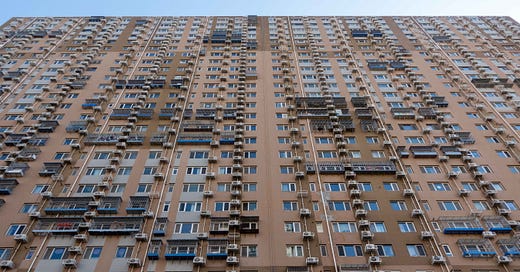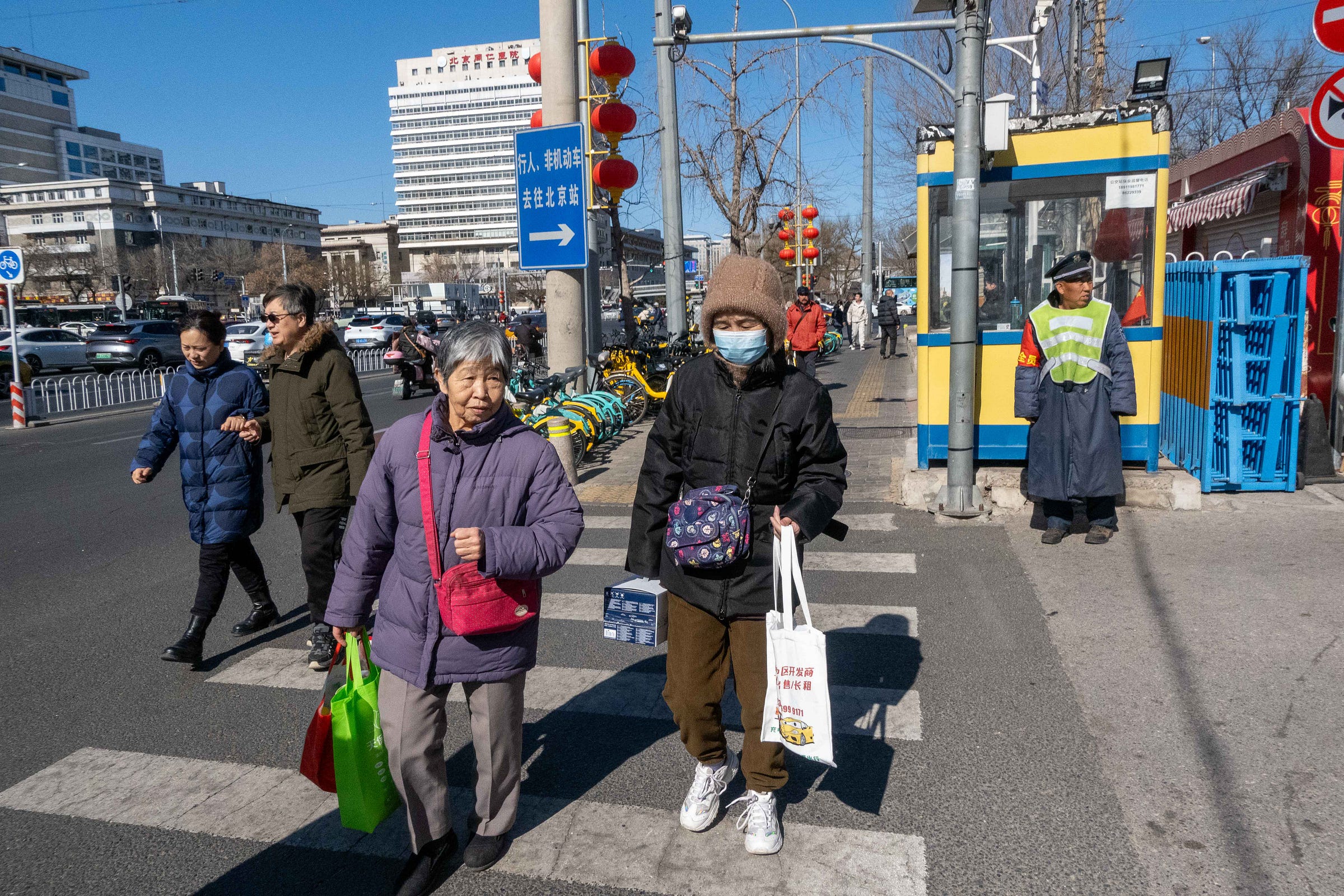(After six days in Beijing, I am even more certain of what I wrote about Shanghai, which is that all cultures are “constructed” largely by a guardian class, either explicitly, as the CCP has been doing in China for decades, or implicitly as in most western nations dedicated to the modern liberalism project. Consider this piece a continuation of that essay.)
Beijing is slightly smaller than Shanghai, but what they have in common is greater than their differences, which isn’t surprising since both are products of CCP’s current vision, which is to modernize, modernize, modernize, tearing down the old and replacing it with the new, gigantic project by gigantic project. Gone (mostly) are the neighborhoods of single story homes along alleys dotted with merchants, replaced by fifty-story apartment complexes adjacent to eight-story malls. Gone are the block-size markets with floors of rotting food, replaced by mall food courts of neon signs, QR codes, and linoleum floors.
The old is chaotic, dirty, and fluid, while the new is ordered, sanitary, and solid, which the CCP wants to move towards because the past was poverty, suffering, and hardship while the future is wealth, health, and flourishing. That is completely understandable, and you have to be the most dogmatic anti-growth ideologue not to appreciate the enormous gains China has made over the last few decades, emancipating millions from a life of painful toil.
Yet it also brings to mind James C. Scott’s observation in Seeing Like a State that a lot of progress from central planners is centered on their quest to gain greater control. Where you see a vibrant city of human thriving, they see unchecked, festering, nefarious plots. Where you see quaint winding alleys, they see dens of malfeasance. Where you see quaint villages of traditional life, they see citizens evading their reach.
Beijing, like Shanghai, and much of Asia, is also massive, on a scale that makes US and European cities seem lilliputian. There are five expressway rings delineating and ordering its six-thousand square miles, and as you walk into the center, passing under each, little changes. The density doesn’t grow, the urban landscape doesn’t change dramatically, instead a fifteen-mile walk from the end of a metro line toward Tiananmen Square, the bullseye at the center, is like a cheap cartoon with a repeating loop background of apartment towers, malls, and the occasional massive modern edifice dedicated to the arts, the past, or some government service. Beijing’s density is chunky, a normal city expanded by one and a half, with absurdly wide roads, apartment complexes set far back, and oversized parks, but with the individual living spaces (the malls, the apartments, the stores) shrunk by an equal amount, so it feels both empty and yet crowded. It has the sprawl of Dallas, but dappled with archipelagos of Manhattan density.
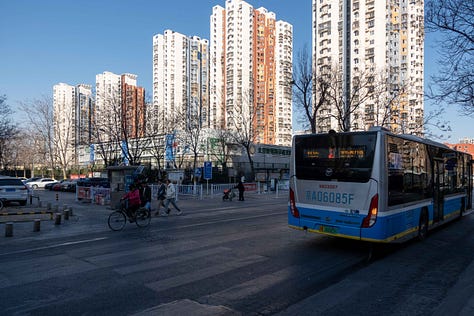
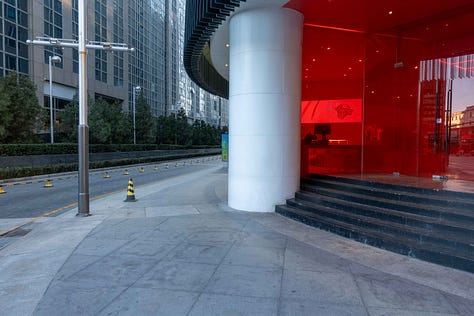
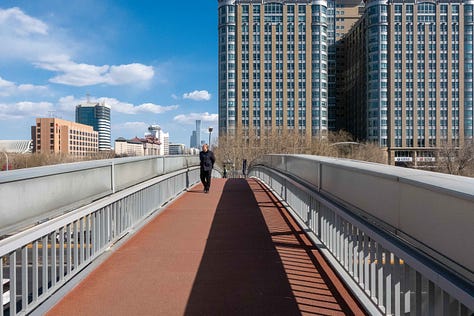
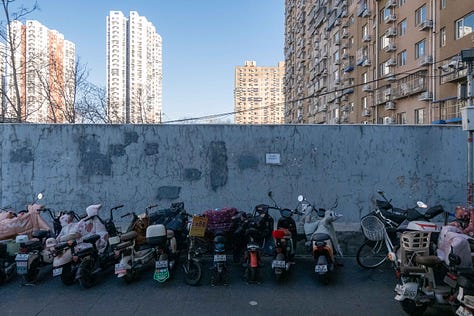
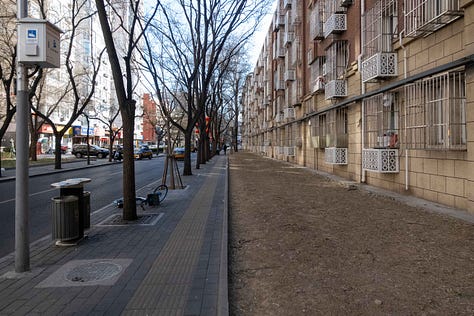
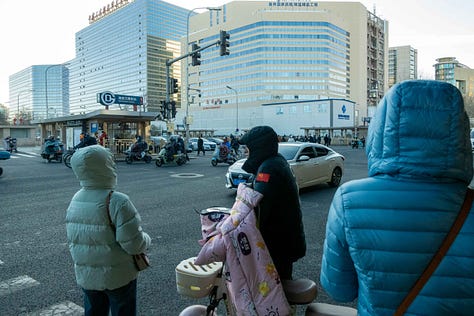
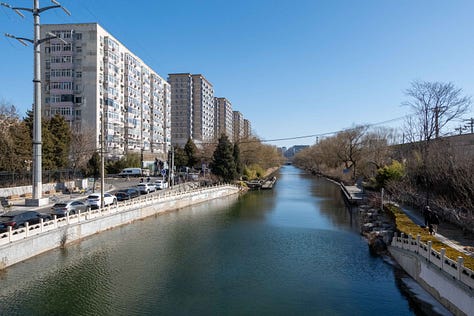
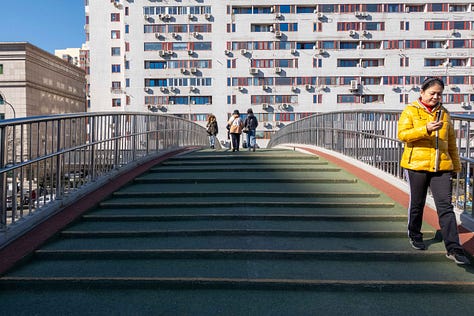
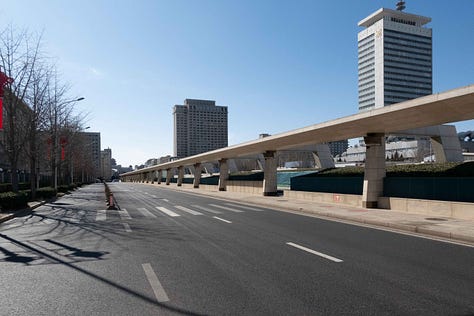
For a walker, the sprawl trumps the density, because in addition to block-long dead zones designed to impress and control, the government has decided that street life is messy, and so the sidewalks are sterile, largely devoid of shops, kiosks, stalls, and all the other things that make Asian cities rambunctious. Beijing is many things, but it is not rambunctious, at least not on the macro scale. Instead, the national desire for rambunctious is tightly controlled, quarantined to shopping centers, a few pedestrian malls, and then scooter driving, where the Chinese really let loose, plowing through stoplights, onto sidewalks, and through traffic like they are playing their own version of Mad Max.
That isn’t a criticism the CCP would care about though, since Beijing is not meant to be walked, and few do, certainly not the distances I did, since the public transportation system is so extensive, which, coupled with what has to be the largest force of delivery men on scooters in the known world, means that the sprawl of Beijing isn’t an obstacle for most citizens. You can live in your apartment block, ten miles from the city center, and get to anywhere you need to go on the metro, or have anything brought to you by a guy on a scooter, even if it is just a single fruit juice, so you never have to walk very far, or own a car, which, in the sprawling density of Beijing, looks like a terribly annoying thing to own.

